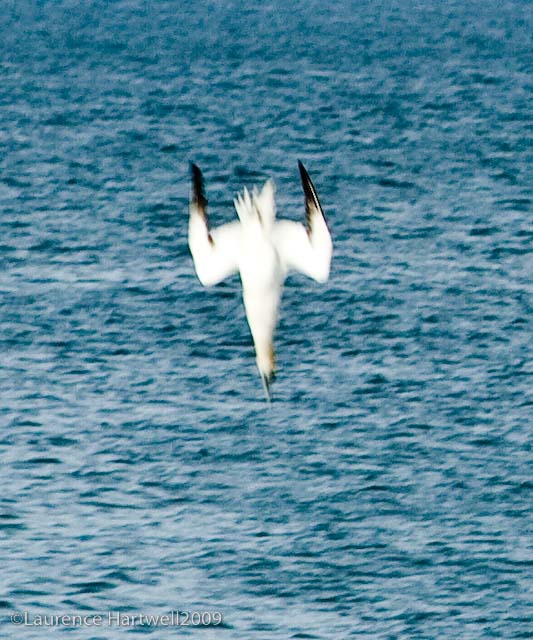Colonies of gannets maintain vast exclusive fishing ranges despite doing nothing to defend their territory from rival colonies, scientists have discovered.
A team of researchers led by the University of Exeter and the University of Leeds observed that northern gannets, which can fly hundreds of kilometres on a single fishing trip, avoided visiting the fishing grounds of gannets from neighbouring colonies.
The findings, published in the journal Science, could transform our understanding of animals' foraging patterns because individual gannets do nothing to enforce this territory or communicate its boundaries when out at sea. A bird entering from a neighbouring colony would be free to fly and fish unhindered.
Researchers from more than 14 institutions in the UK, Ireland and France tracked the flights of nearly 200 northern gannets flying from 12 colonies around the British Isles. Rather than seeing criss-crossing flight paths as the birds headed out from their colonies, they found themselves plotting a strictly segregated map. The most striking example was seen off the west coast of Ireland where gannets from two colonies, Bull Rock and Little Skellig, are within sight of each other yet head off in different directions.
The explanation has nothing to do with territorial behaviour, but instead seems to be a matter of mathematics reinforced by the culture of colonies.
Dr Thomas Bodey, postdoctoral researcher at the University of Exeter and joint-lead author of the study, said: "Gannets get their chance when shoals of fish are forced to the surface, often by predatory whales and dolphins, but when the gannets start plunging into the water and feeding on a shoal, the fish start diving. You have to be one of the first gannets to get there and that is where the maths comes in: if you go into an area that is being used by birds from a closer colony, there is a higher chance that individuals from that colony will be there first.
The same applies when waste is being thrown off the backs off trawlers, another key feeding opportunity for gannets. Cultural transmission within the colonies then seems to reinforce the geographical calculus.
"
Gannets readily follow each other when at sea. Finding such separation between colonies, even when visible from each other, indicates that competition for food cannot be the only explanation and suggests cultural differences between colonies may be important. As with humans, birds have favoured routes to travel, and if new arrivals at a colony follow experienced old hands then these patterns can quickly become fixed, even if other opportunities potentially exist," Dr Bodey said.
The northern gannet is Europe's largest seabird, with a wingspan of around 2m, and nests on steep cliffs and rocky islands. Attaching the matchbox-sized satellite transmitters and GPS loggers used to track the birds was sometimes a major challenge. At the biggest mainland UK colony at Bempton Cliffs in East Yorkshire, a military abseiling team from the Joint Services Mountain Training Wing was called in to help.
Professor Stuart Bearhop, Professor of Animal Ecology at the University of Exeter, said: "We understand an awful lot about what these seabirds do on land, but until recently we knew shockingly little about what they do at sea. The technology is now allowing us to leave the coast with them and we are discovering more and more of these amazing and unexpected patterns."
The UK supports between 60 -70 per cent of the world's northern gannets and the discovery that colonies depend on particular sea areas has implications for the location of marine protected areas and offshore energy development.
The research also has wide ranging implications for our understanding of animal behaviour.
Co-author Dr Keith Hamer, Reader in Animal Ecology in the University of Leeds' Faculty of Biological Sciences, said: "How many other species that we assumed would not show segregation actually do? There is no reason to believe that gannets are unique."
Read more: Full story courtesy of the Cornishman
Welcome to Through the Gaps, the UK fishing industry's most comprehensive information and image resource. Newlyn is England's largest fish market and where over 50 species are regularly landed from handline, trawl, net, ring net and pot vessels including #MSC Certified #Hake, #Cornish Sardine, handlined bass, pollack and mackerel. Art work, graphics and digital fishing industry images available from stock or on commission.


